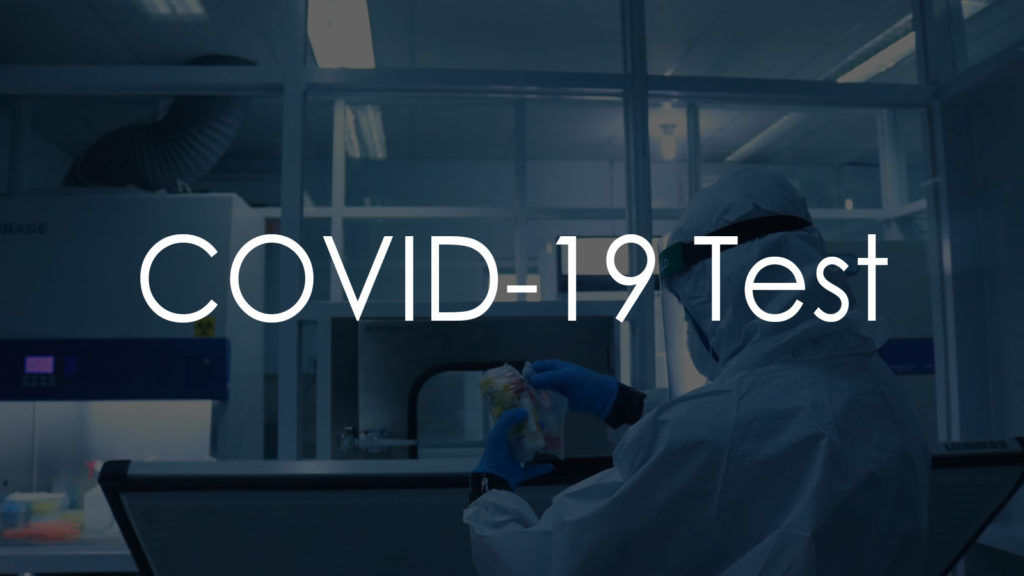COVID-19 tests are essential tools for diagnosing and managing the coronavirus disease (COVID-19), caused by the SARS-CoV-2 virus. These tests help identify infected individuals, monitor the spread of the virus, guide public health interventions, and assess immunity. There are several types of COVID-19 tests, each with specific purposes and procedures. This article will explore the purpose of COVID-19 tests, the different types available, the procedure for conducting them, the interpretation of results, and important considerations when undergoing these tests.

Why is it needed?
COVID-19 tests are necessary for several critical reasons:
- Diagnosing Infection: Identifying active infections in individuals with symptoms or those who have been exposed to the virus.
- Monitoring the Spread: Tracking the spread of the virus in communities and identifying outbreaks.
- Guiding Treatment: Informing healthcare providers about the presence of the virus to guide treatment and isolation measures.
- Public Health Decisions: Assisting in decisions regarding quarantine, isolation, and contact tracing.
- Assessing Immunity: Determining the presence of antibodies to assess past infection and immunity levels.
There are three main types of COVID-19 tests, each with specific purposes and procedures:
Molecular Tests (RT-PCR)
- Description: Detects the genetic material of the virus using reverse transcription polymerase chain reaction (RT-PCR).
- Purpose: Diagnoses active COVID-19 infection.
- Procedure: A sample is collected from the nasal or throat swab and sent to a laboratory for analysis.
- Turnaround Time: Results are usually available within a few hours to a few days.
Antigen Tests
- Description: Detects specific proteins (antigens) on the surface of the virus.
- Purpose: Diagnoses active COVID-19 infection, particularly useful for rapid screening.
- Procedure: A sample is collected from the nasal or throat swab and analyzed on-site.
- Turnaround Time: Results are usually available within 15-30 minutes.
Antibody Tests (Serology)
- Description: Detects antibodies produced by the immune system in response to the virus.
- Purpose: Identifies past infection and potential immunity.
- Procedure: A blood sample is collected and sent to a laboratory for analysis.
- Turnaround Time: Results are usually available within a few days.
Procedure for taking the test
The procedure for conducting COVID-19 tests varies depending on the type of test being performed:
Molecular Tests (RT-PCR)
- Preparation: No special preparation is usually required, but avoid eating, drinking, or smoking for at least 30 minutes before the test.
- Sample Collection: A healthcare professional collects a sample using a swab inserted into the nose or throat. Some tests may use saliva.
- Laboratory Analysis: The sample is sent to a laboratory where RT-PCR is used to amplify and detect the virus’s genetic material.
- Results: Results are typically available within a few hours to a few days, depending on the laboratory’s capacity and location.
Antigen Tests
- Preparation: Similar to molecular tests, avoid eating, drinking, or smoking for at least 30 minutes before the test.
- Sample Collection: A healthcare professional collects a sample using a swab inserted into the nose or throat.
- On-Site Analysis: The sample is processed on-site using a test kit that provides results within 15-30 minutes.
- Results: The results are interpreted based on the presence or absence of visible lines on the test strip.
Antibody Tests (Serology)
- Preparation: No special preparation is usually required.
- Sample Collection: A healthcare professional collects a blood sample from a vein in the arm.
- Laboratory Analysis: The sample is sent to a laboratory where it is analyzed for the presence of antibodies to the virus.
- Results: Results are typically available within a few days.
Interpretation of results
Interpreting COVID-19 test results involves understanding the type of test conducted and the clinical context:
Molecular Tests (RT-PCR) and Antigen Tests
- Positive Result: Indicates an active COVID-19 infection. Immediate isolation and contact tracing are recommended.
- Negative Result: Indicates no detectable virus at the time of testing. However, it does not rule out infection if the sample was taken too early or too late during the infection.
- False Positives/Negatives: Both tests have a risk of false-positive and false-negative results. Molecular tests are more accurate but can still produce errors, especially if sample collection or handling is flawed.
Antibody Tests (Serology)
- Positive Result: Indicates past infection and the presence of antibodies. It suggests potential immunity but does not confirm complete protection.
- Negative Result: Indicates no detectable antibodies, which could mean no past infection or insufficient time for the body to produce antibodies after infection.
- Limitations: Antibody tests are not used for diagnosing active infections and should not be used as the sole basis for decisions on returning to work, school, or other activities.
Important Considerations
When undergoing COVID-19 tests, several factors should be taken into account:
- Test Sensitivity and Specificity: Molecular tests are generally more sensitive and specific than antigen tests. Understanding the accuracy of the test used is crucial.
- Timing: The timing of the test relative to exposure and symptom onset is critical. Testing too early or too late can affect results.
- Sample Quality: Proper sample collection and handling are essential for accurate results.
- Clinical Context: Test results should be interpreted in conjunction with clinical symptoms, exposure history, and other diagnostic information.
- Public Health Guidelines: Follow local public health guidelines for testing, isolation, and quarantine based on test results.
Conclusion
COVID-19 tests are vital tools in the fight against the pandemic, providing essential information for diagnosing infections, monitoring the spread of the virus, and guiding public health interventions. Understanding the different types of tests, their procedures, and the interpretation of results can help individuals better prepare for testing and understand the implications of their results. Regular testing, particularly for individuals with symptoms or exposure to the virus, is crucial for controlling the spread of COVID-19 and protecting public health.